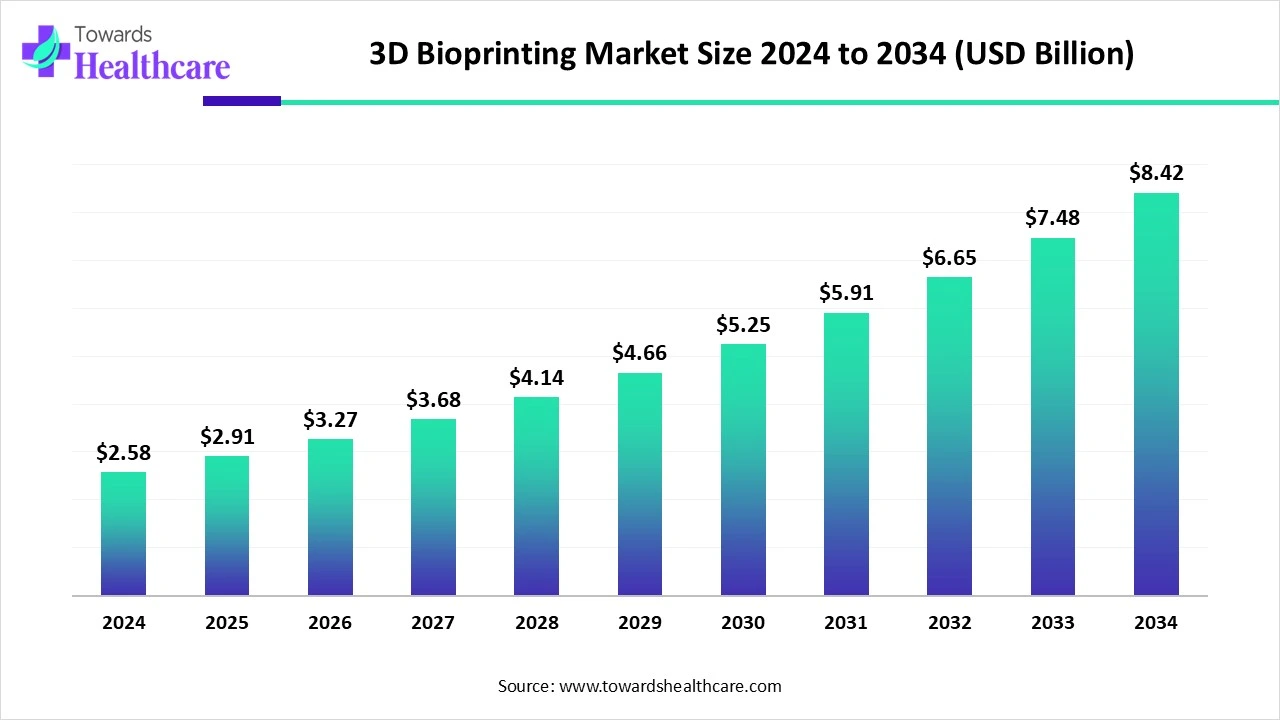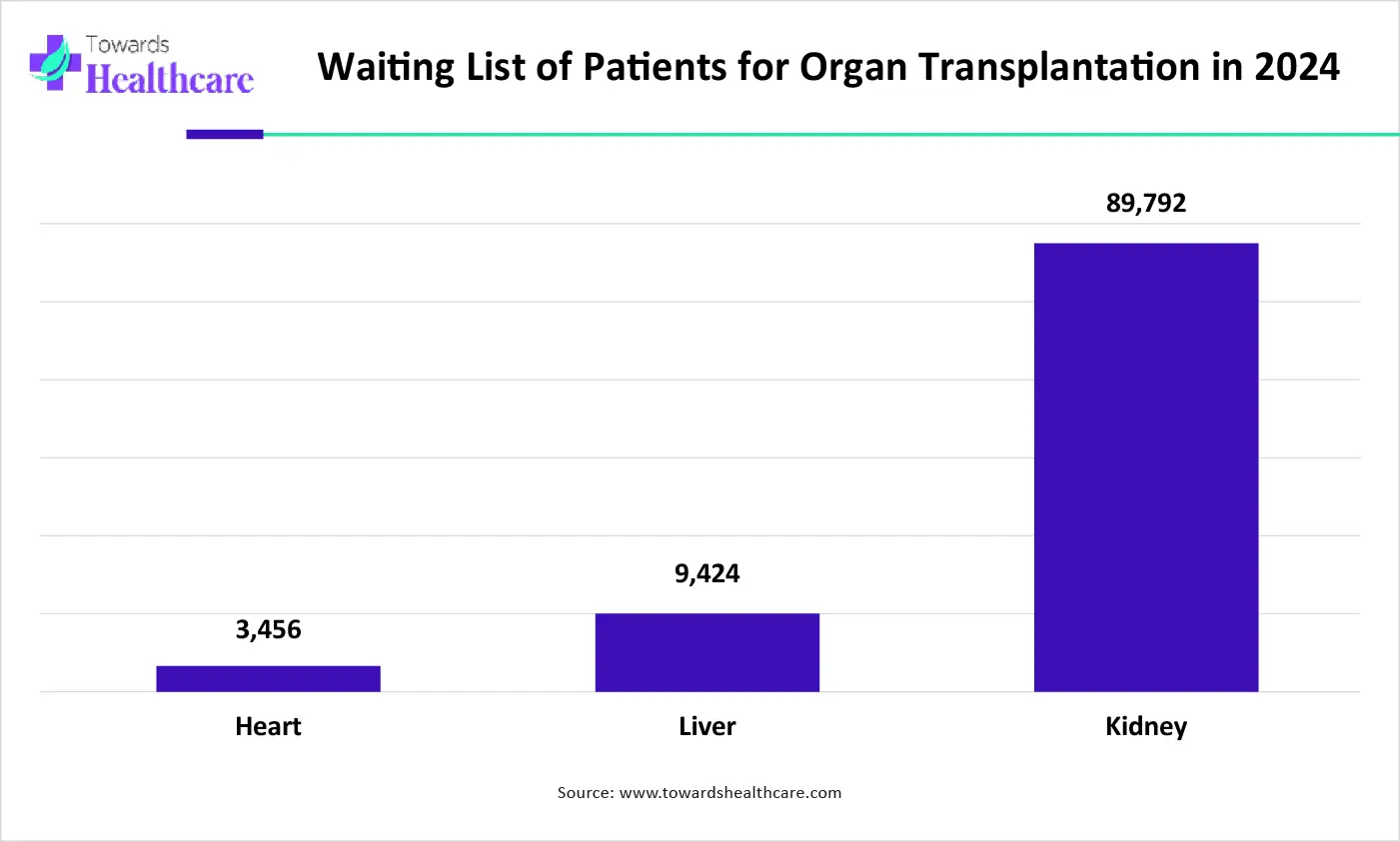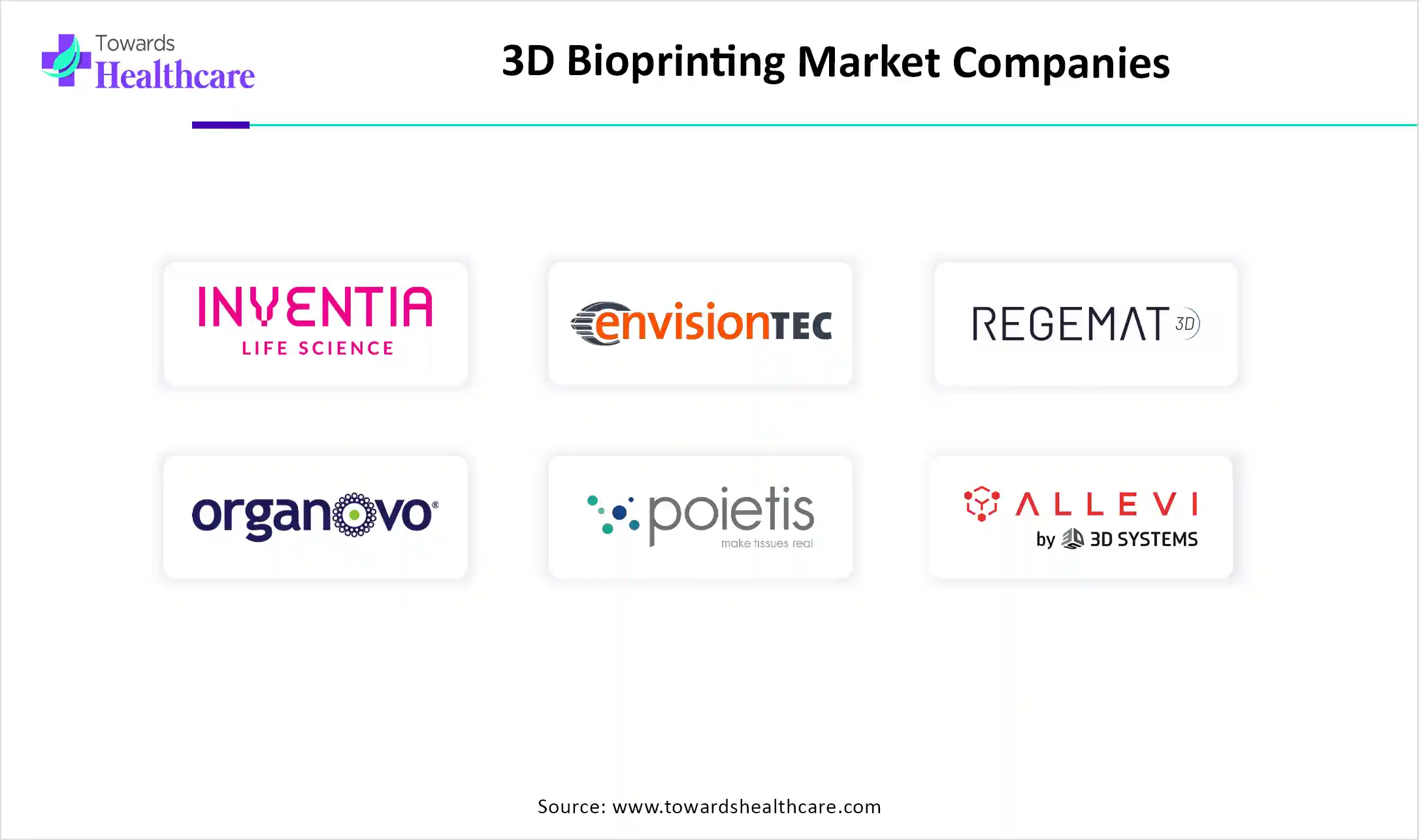November 2025

The global 3D bioprinting market size is calculated at US$ 2.58 in 2024, grew to US$ 2.91 billion in 2025, and is projected to reach around US$ 8.42 billion by 2034. The market is expanding at a CAGR of 12.54% between 2025 and 2034.

The use of 3D bioprinting for the development of tissues or organs for transplants and surgeries is increasing. At the same time, its use to study the drug-organ interactions or their responses is also increasing. This, in turn, enhances new partnerships among the companies and institutions. Additionally, the use of AI in 3D bioprinting is also accelerating new developments. Furthermore, its use in different regions in the healthcare sector is also increasing. Thus, all these developments are promoting the 3D bioprinting market growth.
| Metric | Details |
| Market Size in 2025 | USD 2.91 Billion |
| Projected Market Size in 2034 | USD 8.42 Billion |
| CAGR (2025 - 2034) | 12.54% |
| Leading Region | Asia Pacific |
| Market Segmentation | By Technology, By Application, By Region |
| Top Key Players | Inventia Life Science PTY LTD, EnvisionTEC, Inc., Regemat 3D S.L., Organovo Holdings, Inc., 3D Bioprinting Solutions, Poietis, Allevi, Vivax Bio, LLC, Cyfuse Biomedical K.K., Cellink Global |
A technique to print or fabricate a biomedical part by merging biomaterials, cells, or other growth factors is known as 3D bioprinting. The characteristics of natural tissues are mostly mimicked by these printed biomedical parts. Thus, it can be used in reconstructing different types of vital biological tissues. Similarly, organs can be developed by these tissues. Hence, their use in surgeries and transplants is increasing. Furthermore, these organs are also being used to study the drug-organ interactions and response. Hence, its use in clinical research is increasing.
The integration of AI with advancing 3D bioprinting is enabling the management of intricate datasets, optimizing operations, learn from historical data, performing complex computations, and automating processes. Moreover, it is also being used in the selection of bioink, the printing process, and in medical image reconstruction. This, in turn, improves the designing phase of bioprinting, making it an intelligent printing system suitable for complex surface printing. Additionally, it enhances the printing of defect sites of patients. Furthermore, it also helps in auto-adjusting printing parameters.
Increasing Demand for Organ Transplantation
There is a rise in the demand for organ transplantation due to an increasing organ shortage. This, in turn, increases the demand for the use of 3D bioprinting. With the help of 3D bioprinting, various organs can be developed in the labs depending on the patient's genetic profile. At the same time, it also minimizes the risk of complications in matching the organs of the donors and organ rejection. Thus, the use of 3D bioprinting in the development of tissues and organs is driving the 3D bioprinting market growth.

The graph represents the total number of patients waiting for organ transplantation in year of 2024. It indicates that there is a rise in the demand for organ transplantation. Hence, it increases the demand for the use of 3D bioprinting to deal with this rising organ shortage. Thus, this in turn will ultimately promote the market growth.
Expensive and Limited Infrastructure
The 3D bioprinting requires advanced bioprinters, as well as bioinks, which are costly. At the same time, skilled personnel are required for its proper handling. Moreover, it also requires a sterile environment for the manufacturing of new products, increasing the need for maintenance. Thus, this limits the use of 3D bioprinting due to inadequate infrastructure and increased cost.
New Developments in Bioinks
The use of bioink in the development of tissues or organs is increasing. This, in turn, is enhancing the developments in bioinks to improve their biocompatibility, structural integrity, etc. At the same time, to improve their use in the development of functional tissues, or nerve or muscle tissues, advancements in their mechanical strength are being considered. Additionally, plant-based or synthetic bioinks are also being developed. This, in turn, is enhancing their scalability. Thus, the growing development of bioinks is promoting the 3D bioprinting market growth.
For instance,
By technology type, the inkjet-based segment held the dominating share in the market in 2024. The inkjet-based technology was a preferred option in 3D bioprinting due to its accurate development of small structures at low prices. At the same time, different types of bioinks were used effectively in this technology, enhancing its use, which contributed to the market growth.
By technology type, the magnetic levitation segment is expected to show the fastest growth rate at a notable CAGR during the predicted time. The use of magnetic levitation technology is increasing as it utilizes mild magnetic forces that do not destroy the viable cells, enhancing tissue development. Moreover, it is easy to use, which in turn, is increasing its use in research and drug testing.
By application type, the medical segment led the market in 2024. The growth in the demand for tissue and organ transplantation has increased the use of 3D bioprinting in medical applications. Furthermore, its use in the development of implants, regenerative and personalized medication, as well as in drug testing also increased. Thus, this promoted the market growth.
By application type, the tissue and organ generation sub-segment is expected to show the fastest growth rate during the upcoming years. The rise in the tissue and organ transplantation shortage is increasing the use of 3D bioprinting. Additionally, it is used to develop complex tissues, as well as are developed depending on the patient's genetic profile, enhancing their acceptance rates.
Asia Pacific dominated the 3D bioprinting market in 2024. Asia Pacific is experiencing growth in the healthcare sector. This, in turn, has increased the adoption of various advanced technologies, enhancing the use of 3D bioprinting. Furthermore, its use for various purposes in the healthcare sector has also increased. Thus, this contributed to the market growth.
As China has a large population, the demand for the use of 3D bioprinting for organ transplantation is increasing. At the same time, new initiatives are also being introduced by the government to enhance their use. Moreover, the growing research in industries as well as institutes is also supported by the funding provided by the government.
The growing diseases, as well as the research, are increasing the use of 3D bioprinting in India. At the same time, affordable production is also attracting tourists, enhancing the medical tourism for surgeries as well as implant treatments. These are further supported by the government investments or policies.
North America is expected to grow significantly in the 3D bioprinting market during the forecast period. The industries in North America are well-developed, along with the presence of advanced technologies as well as skilled personnel. This, in turn, is increasing as well as improving the 3D bioprinting production. Thus, this enhances the market growth.
The U.S. consists of a well-developed healthcare sector, which utilizes 3D bioprinting for the development of organs or tissues to deal with the growing demand for organ transplantation. At the same time, the growing diseases is increasing their use in the development of personalized treatment options as well as regenerative medicines.
The industries in Canada are using 3D bioprinting for various applications. It is mostly used in drug testing as well as in the development of complex structures to conduct research and development for personalized medication. Moreover, the use of advanced technologies is also enhancing the development process, minimizing errors, and enhancing its use.
Europe is expected to show lucrative growth in the 3D bioprinting market during the forecast period. The research conducted in academic institutions as well as industries is increasing the use of 3D bioprinting in Europe. Furthermore, the growing demand for regenerative medicines is also contributing to its enhanced use. Thus, this is promoting the market growth.
The German industries and institutes are focusing on the development of new bioinks, complex structures, etc., with the help of 3D bioprinting. This, in turn, is supported by the investments provided by the regulatory bodies and the government. Furthermore, the innovation in regenerative medicines is also enhancing the research and development process.
The rising demand for personalized and regenerative medicines is increasing in the UK, which in turn, is increasing the use of 3D bioprinting. Furthermore, to promote the safe and effective use of these bioprinted products, guidelines are being provided by the regulatory bodies. Moreover, their use in disease modelling and drug testing is also growing.

Government bodies of several countries launch initiatives for 3D bioprinting, including:
By Technology
By Application
By Region
November 2025
November 2025
November 2025
November 2025